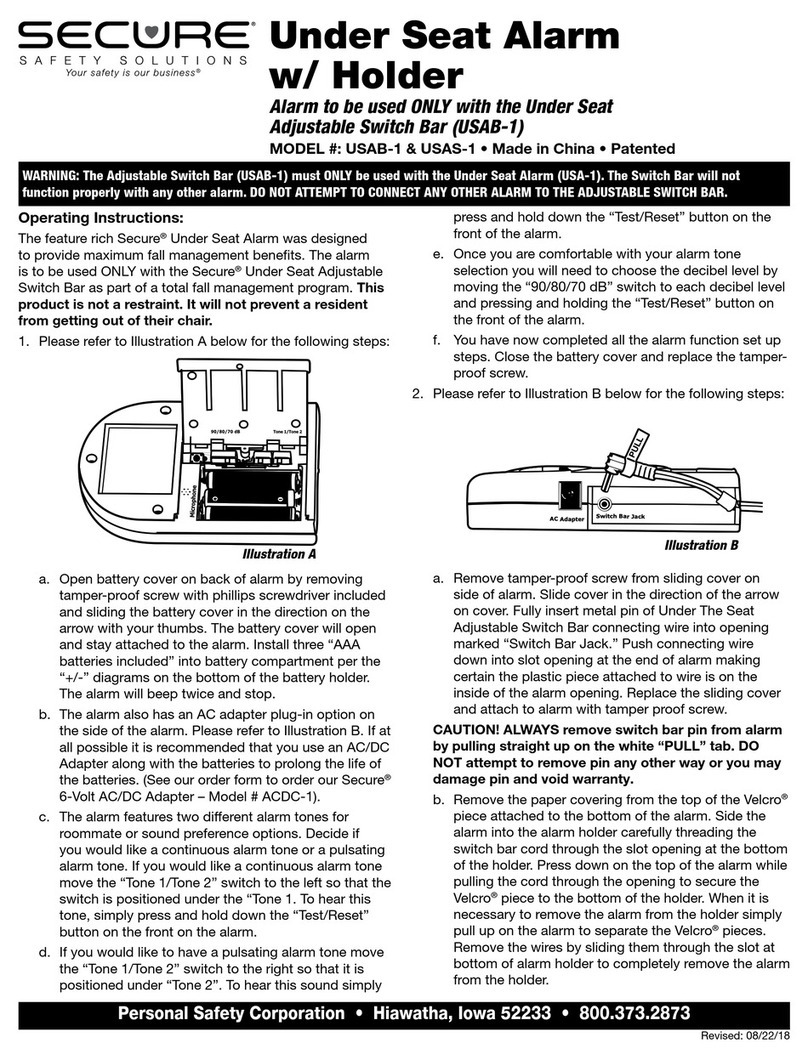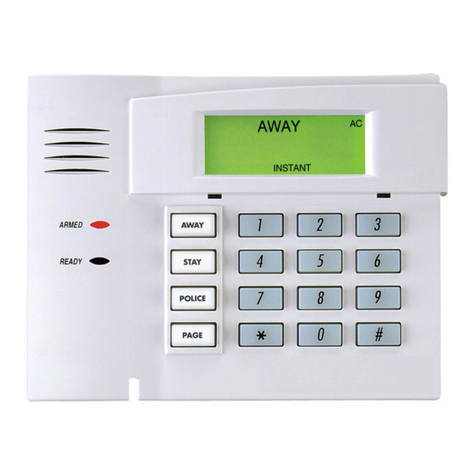
7
The siren’s operation mode, in addition to the settings you should do, as described in the
following sections, has to do with the options of the wiring to the control panel, as detailed below.
1. Selecting the way in which the TAMPER of the siren will trigger alarm
The siren’s tamper activates the siren and the “TAMPER” output simultaneously. If you do not
wish the siren to be activated and only the “TAMPER” output to be activated, you can program
as described in the corresponding section on page 10.
The Tamper contacts end up to the “TAMPER” output of the siren. When the siren is screwed
to the wall and its lid is closed, this output is NC and becomes NO when the lid is opened
or the siren is detached from the wall. These contacts can be connected to any direct or 24-
hour zone of the panel (like NC or EOL zone, using EOL resistor), taking care to use the
correct polarity (COM & ZONE).
If you use an EOL zone, then, for greater security, place the EOL resistor in the siren at the
TAMPER ZONE output and in series with the cable as shown in the wiring diagram (page 6).
2. Remote test of the siren
The input “REM-BUS” is used to remotely control the status of the siren’s battery.
At this input you have to transmit 12.0V every time you wish to test the battery. By applying
the 12.0 V to this input, the “FLT OUT” error output opens to confirm receipt of the Remote
Test command. At the same time, the battery status test starts. If there is no problem with the
battery, the “FLT OUT” output will remain open for only 10 seconds and then be deactivated.
If a fault is detected on the battery, the “FLT OUT” output will remain activated after the end of
10 seconds and until the fault is restored. Once the fault is restored, another test will be carried
out and, if the test does not detect a problem, the “FLT OUT” output will be deactivated.
3. Power Supply of the siren
The + 12V inputs are for providing power supply to the siren and for charging the siren’s
battery. They are connected to the corresponding outputs of the panel, taking care to use the
correct polarity.
Attention!
For security reasons and for the proper operation of the siren, a battery must in any case be
used. In the case, however, that you want the siren to operate without a battery, you must
connect the red battery cable to + 12V input of the siren.
4. Select the siren’s indication activation mode
The TRIGGER (+ or -) inputs are used for the activation of the siren. Activation can be done
with one of the following two ways:
A. Interruption of positive voltage
Connect the “+ TRIGGER” input of the siren to the corresponding output of the panel or a
programmable output (PGM), which must provide 12.0V at standby and turn to 0 when an
alarm is activated.
B. Interruption of negative voltage
Connect the “- TRIGGER” input of the siren to the corresponding output of the panel or to a
programmable output (PGM), which must have 0V at standby and turns to Open Collector
or turns to 12.0V when an alarm is activated.
The siren follows the alarm duration of the table. However, in the event that the cables
connecting it to the panel are cut or shorted, the siren will sound an alarm of maximum 5
minutes.
Selecting the Siren’s Operation Mode





























